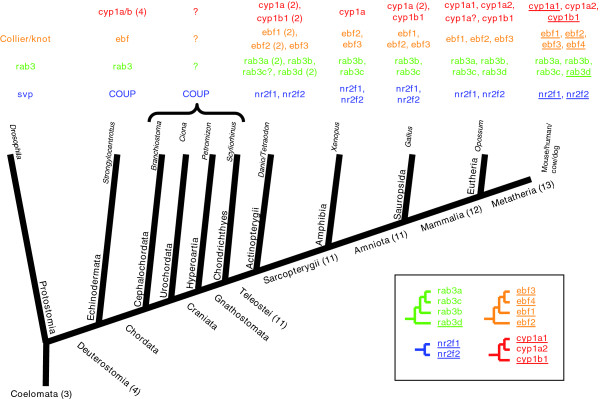Figure 5.
Phylogenetic distribution of stem cell markers and their close paralogs in four protein families. Major taxa along the Coelomata lineage are depicted in bold black text with deduced numbers of genes from these families in parentheses. Phylogenetic relations between species were taken from the National Center for Biotechnology Information's Taxonomy Browser, except for the relation between Cephalocordata and Urochordata, which was taken from Vienne and Pontarotti [72]. Species names are given in italic black text. Colored text indicates paralogs for four families: red for cyp1, orange for ebf, blue for nr2f1, and green for rab3. Numbers in parentheses indicate multiple copies of gene (for example, in Actinopterygii genes). Many genes are duplicated in Actinopterygii because of a whole-genome duplication event postulated to have occurred along the ray-finned fish lineage [73]. Most expansion of these four families occurs after divergence of Deuterostomia and before divergence of Teleostei. Underlined genes for mouse indicate genes identified in the selected marker set. The database identifiers of the sequences are given in Additional data file 4. The inset on the lower right corner shows schematic phylogenetic trees for the murine members of the four families. All branches shown had bootstrap values above 0.5. Outlier sequences used for each family (not displayed): D. melanogaster rab3 for rab3, S. purpuratus cytp1 for cytp1, D. melanogaster svp for nrf2f1, and D. melanogaster knot for ebf.

